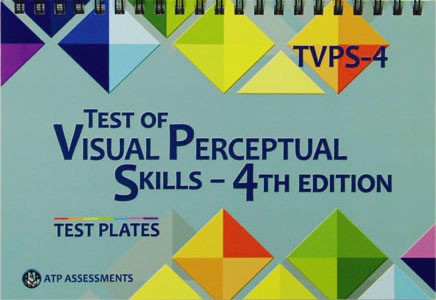- Test Of Visual-perceptual Skills Third Edition Tvps-3 Book
- Test Of Visual-perceptual Skills Third Edition Tvps-3 Free
Validation of the Test of Visual Perceptual Skills-Third Edition in patients with stroke

Two books for makers that you should read!SBS 2 Activity Workbook CD1. Overview of the KTEA 3 Part I The Test of Visual Perceptual Skills, 3rd Edition (TVPS -3) EOWPVT-SBE project Administration and Scoring Andrew Harris Kaufman Test Basal and Ceiling Information Interpretation of Test Scores IQ TEST matrix 1-19. Separate subtests show details of visual-perceptual skills. Now, just one test covers all of the ages that were previously covered by the two forms of the earlier test (TVPS-R and TVPS-UL-R). The TVPS-3 is used by many professionals, including learning specialists, occupational therapists, optometrists, and rehabilitation specialists.
- OBJECTIVES To examine the test-retest reliability, calculate minimal detectable change (MDC), and report internal consistency of the Test of Visual Perceptual Skills-Third Edition (TVPS-3) in patients with stroke. DESIGN Repeated-measures design (at an interval of 2wk). SETTING Medical center. PARTICIPANTS Patients (N=50) with chronic stroke who completed the TVPS-3. INTERVENTIONS Not.
- The TVPS-3 is used by many professionals, including learning specialists, occupational therapists, optometrists, and rehabilitation specialists. The TVPS-3 remains an easy to use assessment to determine the visual perceptual strengths and weaknesses of students aged 4-0 through 18-11. Visual perception is an important ability that enables one to make sense out of what is seen (in contrast to visual acuity tests which determine just that something was seen by the individual).
Abstract
[[abstract]]Purpose: The Test of Visual Perceptual Skills-Third Edition (TVPS-3) with seven subscales has been used to assess visual perception in patients with stroke. The purpose of this study was to investigate ecological validity, convergent validity, and discriminative validity of the TVPS-3 in patients with stroke.Methods: One hundred patients were assessed with the TVPS-3, two measures of activities of daily living, and two cognitive measures. To examine ecological validity, we calculated correlations (Pearson’s r) among the TVPS-3 and two measures of activities of daily living. To examine convergent validity, correlations (r) were estimated among the TVPS-3 and two cognitive measures. To examine discriminative validity, independent t-test was used to compare the two groups with different levels of disability and to detect whether there were statistically significant differences in the TVPS-3 between these groups.Results: The correlations were 0.21–0.48 among the TVPS-3 and two measures of activities of daily living. The correlations were 0.29–0.68 among the TVPS-3 and two cognitive measures. Between the two groups, the t-test results showed statistically significant difference (p < 0.05) for the overall scale and the five subscales of the TVPS-3.Conclusions: The TVPS-3 has acceptable convergent validity, ecological validity, and discriminative validity and is useful to assess the visual perception in patients with stroke
Sorry, we are unable to provide the full text but you may find it at the following location(s):


Test Of Visual-perceptual Skills Third Edition Tvps-3 Book

Test Of Visual-perceptual Skills Third Edition Tvps-3 Free
To submit an update or takedown request for this paper, please submit an Update/Correction/Removal Request.